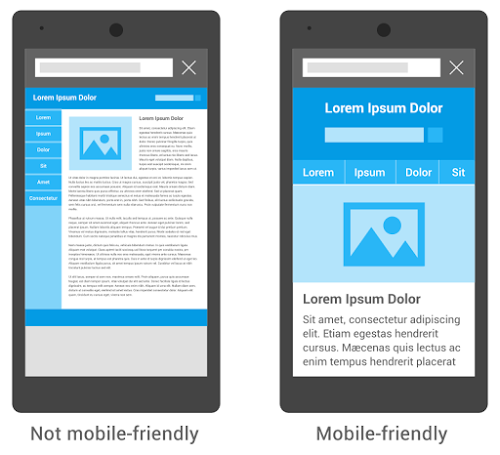Google published a blog post on 21st April 2015 and confirmed that with mobile phones increasingly becoming the primary way for people to search the Internet, we want to ensure that when you search on Google you find content that is not just relevant and timely, but also easy to read and interact with on smaller mobile screens.
According to Google visitors abandon websites that aren’t mobile friendly at higher rates. And research shows 74% of users say they are more likely to return to a mobile-friendly site.
In February 2015, Google published a blog post mentioning that they want more mobile friendly websites in the search results.
Two important major announcements made by Google in February 2015 blog post were:
- Starting April 21, we will be expanding our use of mobile-friendliness as a ranking signal, meaning more mobile-friendlysites in search results.
- We will begin to use information from indexed apps as a factor in ranking for signed-in users who have the app installed.
Google’s mobile ranking will now use mobile-friendliness as a signal that weighs in favor of pages that are formatted for mobile phones, like the image on the right.
Points To Take A Note Of :
- Back in November, Google introduced a “mobile-friendly badge” to notify users when a link in search results led to a mobile friendly-page, andprovided resources to help webmasters become mobile-friendly.
- Google has started rolling out the change to take into account whether a site is mobile-friendly when Google ranks search results on mobile phones.
- This change will be one of the 200 ranking factors and non-mobile-friendly sites won’t disappear from mobile Search results—they may still rank high if they hold great content the user wants.
- If you use Google search on your mobile phone, you can now more easily find high-quality and relevant results where text is readable without tapping or zooming, tap targets are spaced appropriately, and the page avoids unplayable content or horizontal scrolling.
- In just the two months since Google announced this change, Google says they have seen a 4.7 percentage point uptick in the proportion of sites that are mobile friendly, and we hope to see even more in the coming months.
- Webmasters can check if their site is mobile-friendly by examining individual pages with the Mobile-Friendly Test or check the status of the entire site through the Mobile Usability report in Webmaster Tools. Once a site becomes mobile-friendly, Google will automatically re-process those pages (and webmasters can expedite the process by using Fetch as Google with Submit to Index).





